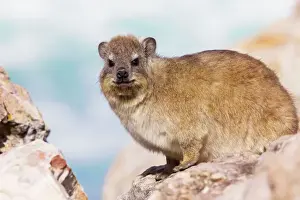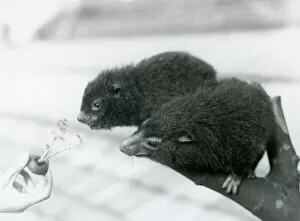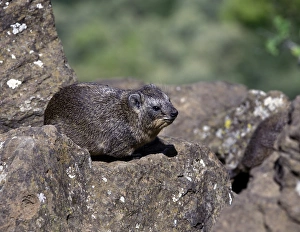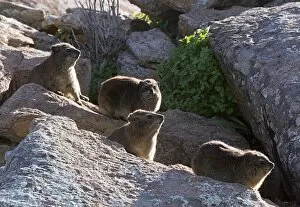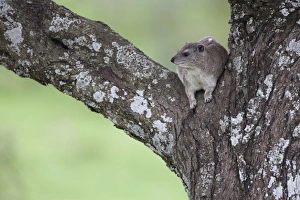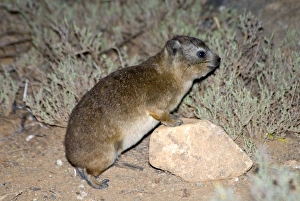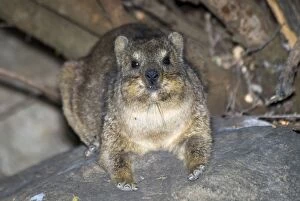Procaviidae Collection
"Discover the Fascinating World of Procaviidae: The Rock Dassie or Rock Hyrax" Procaviidae, commonly known as the Rock Dassie or Rock Hyrax
All Professionally Made to Order for Quick Shipping
"Discover the Fascinating World of Procaviidae: The Rock Dassie or Rock Hyrax" Procaviidae, commonly known as the Rock Dassie or Rock Hyrax, is a unique and captivating creature found in South Africa. These small mammals are often mistaken for rodents due to their appearance, but they actually belong to a separate family. In De Hoop Nature Reserve, Western Cape, South Africa, an adorable sight awaits - a mother Rock Hyrax with her babies. These little ones cling onto their mother's back as she navigates the rocky terrain with ease. It's heartwarming to witness this display of maternal care. Meanwhile, in another part of South Africa, an adult and young Western Tree Hyrax can be seen perched on a branch. Their agile bodies allow them to effortlessly balance themselves while observing their surroundings. Venturing into Tanzania's Serengeti National Park brings us face-to-face with the Yellow-spotted Rock Hyrax. Standing tall on rocks or sheltering in tree holes during different seasons showcases their remarkable adaptability. The rock formations become playgrounds for these social creatures as we encounter entire families basking under the sun together. Whether it's resting on rocks or branches high up in trees, these hyraxes find comfort and security within their natural habitats. One cannot help but marvel at the foot structure of these fascinating animals when visiting Mountain Zebra National Park in Eastern Cape, South Africa. With forelegs firmly planted on stones or simply relaxing against rocky surfaces, they demonstrate exceptional agility and grip. As we delve deeper into understanding Procaviidae species like the Rock Dassie and Yellow-spotted Rock Hyrax through these snapshots from various locations across Southern Africa, Tanzania, and Kenya, we gain insight into their behavior and appreciate how they have adapted to survive in diverse environments.

